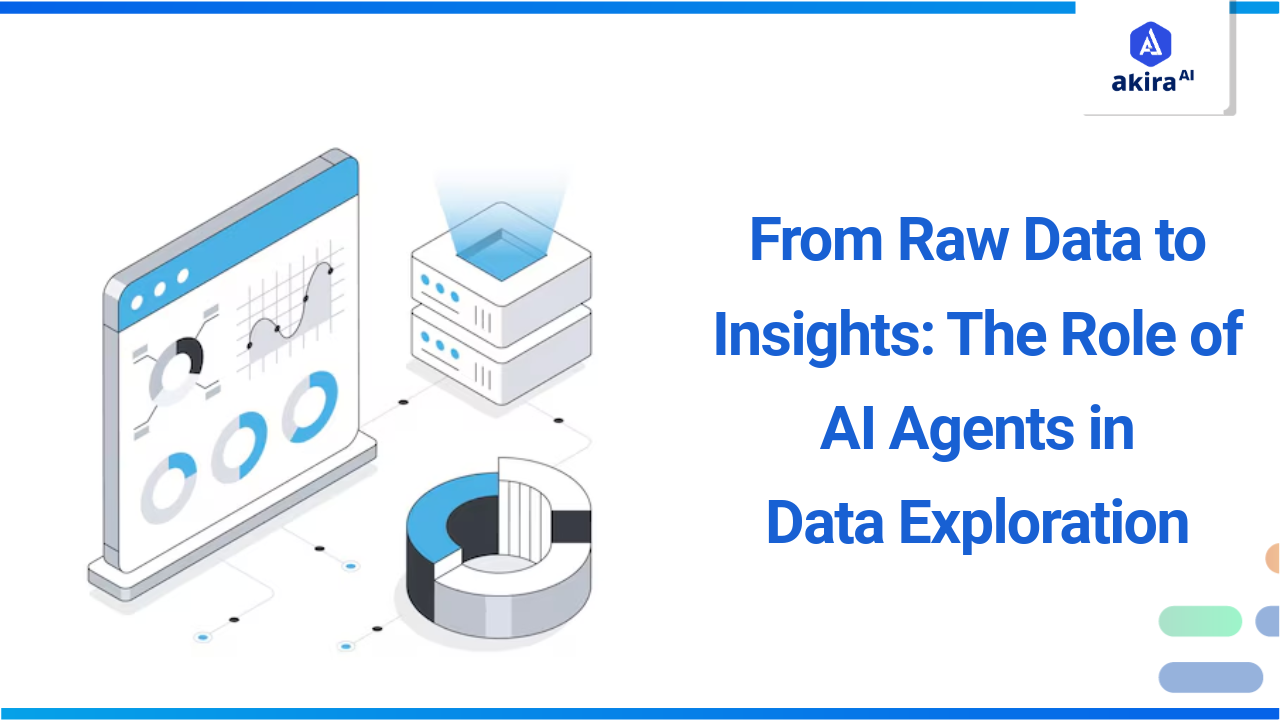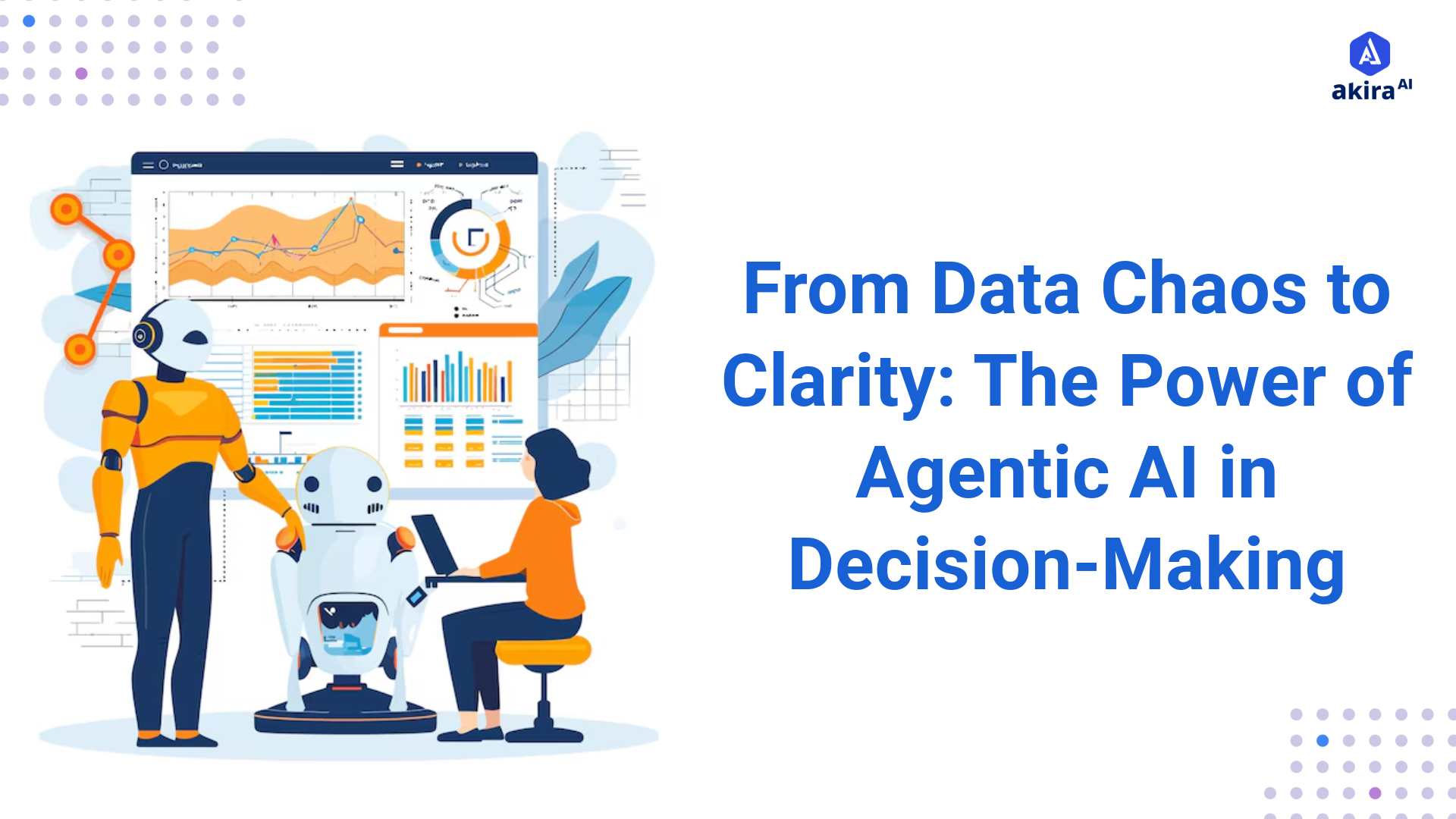Key Insights
-
AI agents automate data processes, delivering faster, more accurate insights and enabling real-time decision-making.
-
Traditional methods are slow and error-prone, while AI agents efficiently detect patterns and scale data analysis.
-
AI agents are enhancing decision-making and operational efficiency in sectors like healthcare, retail, and finance.

In today’s world, businesses are overwhelmed by the sheer volume and complexity of data they generate. The process of data analysis, traditionally a labor-intensive task, has now become a vital component in extracting actionable insights to make informed decisions. However, as organizations continue to collect vast amounts of data, the traditional methods of analyzing this data are proving to be inadequate in keeping up with the pace and volume. This is where AI agents come into play, revolutionizing the way data is explored and analysed.
What is Data Exploration?
Data exploration is the process of analyzing and summarizing datasets to understand their structure, patterns, relationships, and anomalies before applying advanced analysis or machine learning models. It involves techniques such as statistical analysis, data visualization, and basic data cleaning. The goal is to uncover insights, detect outliers, and identify trends.
For example, if you're analyzing customer data, data exploration may involve calculating average purchase values, visualizing spending patterns across different demographics, or checking for missing values. This step is crucial for ensuring the quality and relevance of the data before deeper analysis or predictive modeling.
Key Concepts of Data Exploration
Several key concepts are integral to the data exploration process. These include:
Traditional Way of Data Exploration and Analysis
Traditionally, data exploration has been a labor-intensive process that relied heavily on human intervention. Data analysts would spend hours—sometimes even days—extracting, cleaning, and analyzing data manually. Business intelligence (BI) tools, like Tableau and Power BI, would help visualize the data, but these tools still required a lot of manual effort for data processing and analysis.
Moreover, traditional methods often depended on SQL queries to extract relevant data from relational databases. While these methods have been effective to some extent, they come with certain limitations, such as the need for specialized technical skills and the time-consuming nature of querying large datasets. Additionally, insights from traditional data exploration methods were often limited by human biases and errors.
Challenges in Traditional Data Exploration Methods
The traditional approach to data analysis presents several challenges, particularly when it comes to handling large datasets. Some of the major challenges include:
-
Time-Consuming: The process of data exploration and analysis can take a significant amount of time, especially when dealing with large, unstructured datasets. Analysts spend a considerable amount of their time cleaning and organizing data rather than focusing on deriving insights.
-
Limited Scalability: As data volumes increase, traditional methods struggle to scale. Managing, processing, and analyzing massive datasets manually is impractical and inefficient.
-
Inaccuracy and Human Error: Traditional methods rely heavily on human intervention, which introduces the potential for errors. Misinterpretation of data or biases introduced by human analysts can lead to flawed insights.
-
Lack of Real-Time Analysis: Traditional data exploration methods typically do not provide real-time analysis, making it difficult for businesses to respond quickly to changing conditions.
-
Inefficient Pattern Detection: Identification of intricate patterns from large datasets proves challenging without the use of sophisticated analytical tools. Conventional practices are based on statistical models, which might be unable to yield deeper insights at the right time.
Impact on Customers Due to Traditional Data Exploration Approaches
The inefficiencies of traditional data exploration methods can have significant consequences for businesses and their customers. Some of the negative impacts include:
-
Delayed Insights: Since traditional methods are slow and labor-intensive, businesses may experience delays in obtaining crucial insights. This means they may miss out on time-sensitive opportunities or fail to react quickly to market changes.
-
Higher Operational Costs: Manual data processing and analysis require significant resources. Not only do businesses need to hire skilled data analysts, but they must also invest in costly BI tools and infrastructure.
-
Inefficiencies in Customer Experience: Data exploration is critical for understanding customer behaviors, preferences, and pain points. With traditional methods, businesses may struggle to offer personalized experiences or develop effective marketing strategies.
-
Missed Opportunities for Innovation: Because traditional data exploration methods are often focused on answering predefined questions, businesses may miss opportunities to explore new data sources or uncover unforeseen insights that could lead to innovation.
Akira AI: Multi-Agent in Action
AI agents can analyze data at multiple levels, offering businesses deeper insights than traditional methods:
 Fig 1: Architecture Diagram of Data Exploration
Fig 1: Architecture Diagram of Data Exploration
-
Data Ingestion Agent: The Data Ingestion Agent automates the collection of raw, structured, unstructured, and external data from multiple sources. This agent ensures that all relevant datasets are gathered and prepared for analysis. It allows businesses to quickly aggregate comprehensive data for exploration.
-
Data Cleaning Agent: The Data Cleaning Agent identifies and corrects errors in the data, such as missing values or inconsistencies, ensuring high-quality and reliable data. This AI-driven process helps eliminate manual errors in data preparation. It ensures that only accurate data is used for further analysis.
-
Exploratory Data Analysis (EDA) Agent: The EDA Agent conducts initial analysis to uncover patterns, trends, and anomalies in the data. This AI-powered agent identifies valuable insights and relationships within the data without needing manual intervention. It helps businesses quickly understand key data characteristics and guide further analysis.
-
Data Visualization Agent: The Data Visualization Agent creates interactive charts, graphs, and dashboards to visually represent data insights. By using AI tools, this agent generates clear and intuitive visuals that make complex data easier to understand. It enhances communication and decision-making by presenting data in a digestible format.
-
Master Orchestrator Agent: The Master Orchestrator Agent coordinates the activities of all the specialized agents throughout the data exploration process. It ensures smooth collaboration, streamlining workflows and maintaining consistency. This central agent oversees the entire process, driving efficiency and seamless integration.
Prominent Technologies in the Space of Automated Data Exploration
Several technologies have emerged to support data exploration, each offering unique advantages and limitations. Some of the most prominent ones include:
-
Business Intelligence (BI) Tools: Tools like Tableau, Power BI, and Qlik allow businesses to visualize their data and create interactive dashboards. While these tools are great for presenting data, they still require a lot of manual effort in terms of data preparation and analysis.
-
Machine Learning and Data Science Platforms: Platforms like Python, R, and MATLAB provide more advanced tools for data analysis, allowing businesses to apply machine learning algorithms and perform complex statistical modeling. However, these platforms require specialized expertise.
-
Automated ETL Solutions: Extract, Transform, and Load (ETL) tools help businesses automate the process of integrating and preparing data for analysis. While these solutions can save time, they still require setup and configuration, and they may not fully automate the exploration process.
While these technologies have made progress in automating parts of the data exploration process, they are still limited in their ability to uncover hidden insights without human intervention. This is where AI agents come in.
How AI Agents Supersede Traditional Data Exploration Technologies
AI agents are a game-changer in the field of data exploration. These advanced systems can process large datasets in real-time, identify patterns, and generate insights without human intervention. Here’s how AI agents surpass other technologies:
-
Automated Pattern Detection: AI agents can automatically detect complex patterns and anomalies in data that would be difficult or time-consuming for humans to identify. For example, AI can identify trends in customer behavior, forecast demand, and detect fraud in real-time.
-
Natural Language Processing (NLP): AI agents with NLP capabilities can understand and respond to natural language queries, allowing business users to explore data simply by asking questions. This eliminates the need for technical expertise and makes data exploration more accessible.
-
Continuous Learning: Unlike traditional tools, AI agents can learn from new data over time, improving their ability to uncover insights and predict future trends. This allows businesses to make more informed decisions based on up-to-date information.
-
Scalability: AI-powered systems are highly scalable, capable of processing large datasets with ease. This makes them ideal for organizations dealing with big data, as they can provide real-time insights without compromising performance.
-
Reduction in Human Bias: AI agents make data-driven decisions based on objective algorithms, minimizing the risk of human error or bias that can affect traditional methods of exploration.
Successful Implementations of AI Agents in Data Analysis and Exploration
Many businesses across different industries have successfully implemented AI agents for data exploration, reaping significant benefits:
-
Healthcare - IBM Watson Health: IBM Watson Health uses AI agents to analyze medical data, assisting doctors with diagnoses and personalized treatment recommendations. This has improved accuracy in healthcare decision-making and patient outcomes.
-
Retail - Walmart: Walmart employs AI agents to analyze customer data and predict demand, optimizing inventory and personalizing offers. This has enhanced customer experience and boosted operational efficiency.
-
Finance - JPMorgan Chase: JPMorgan Chase uses AI agents for fraud detection, risk assessment, and contract analysis, improving financial decision-making. The COiN system automates the review of legal documents, saving significant time and resources.
-
Transportation - Uber: Uber’s AI agents analyze ride data and traffic patterns to optimize routes and pricing in real-time. This enhances efficiency, improves user experience, and better matches drivers with passengers.
-
Marketing - Netflix: Netflix uses AI agents to explore user preferences and viewing patterns, providing personalized content recommendations. This boosts user engagement and retention by tailoring experiences to individual tastes.
Next Steps with AI Agents
Talk to our experts about implementing AI agents in data exploration, utilizing automation to transform raw data into actionable insights and drive data-driven decision-making across industries. Utilizes AI to automate and optimize IT support and operations, improving efficiency and responsiveness.



